Are you ready to take the next step in preserving our rich cultural heritage? In this article, we'll explore the exciting possibilities that come with upgrading museum technology, from enhancing visitor experiences to streamlining collections management. With innovative tools at our fingertips, museums can engage their audiences like never before, making art and history more accessible to everyone. Join us as we dive deeper into this transformative journey and discover the benefits of embracing cutting-edge technologies in our cherished institutions.
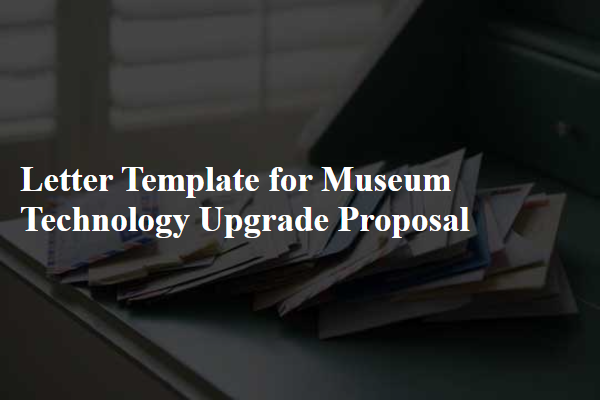
Clarity of Objectives
A technology upgrade for museums focuses on enhancing visitor engagement through interactive displays and augmented reality experiences. The objective centers on increasing visitor numbers (currently averaging 300 per day) and boosting event attendance (such as workshops and exhibitions) by 30% within the next year. Implementing touchscreen kiosks and mobile applications can provide detailed information about artifacts, while virtual reality setups can immerse visitors in historical scenes, allowing them to experience events like the signing of the Declaration of Independence in Philadelphia. Improving Wi-Fi access throughout the venue ensures all visitors can connect seamlessly and participate in online activities. Investing in digitization of the collections will enable online access, attracting global audiences and providing educational resources for schools.
Budget and Cost Analysis
A museum technology upgrade proposal requires a comprehensive budget and cost analysis that outlines the financial implications of implementing new systems. Digital exhibits can incorporate augmented reality (AR) to enhance visitor engagement, costing approximately $50,000 per installation for software and hardware. Implementing a centralized digital cataloging system, essential for inventory management, typically ranges from $20,000 to $100,000 depending on the size of the collection and complexity of the existing database. Additional expenses include training staff, estimated at $5,000, ensuring they are proficient in using new systems. Maintenance and support contracts, often required for software updates, may add an annual cost of around $10,000. Accounting for unexpected expenses, it is crucial to allocate a contingency fund of approximately 15% of the total project cost, ensuring full financial readiness for potential overruns while aiming for increased operational efficiency and enhanced visitor experiences.
Technological Benefits and Advancements
A museum technology upgrade can significantly enhance visitor engagement through interactive displays and digital kiosks, utilizing augmented reality (AR) to provide immersive experiences. The implementation of cloud-based systems allows for efficient management of collections, enabling curators to access inventory data from anywhere, streamlining exhibition planning. Advanced analytics tools can track visitor behavior, providing valuable insights into popular exhibits and guiding future developments. High-definition projectors can enhance multimedia presentations, captivating audiences and promoting education about historical artifacts. Mobile applications can offer guided tours and facilitate personal exploration of exhibits, fostering a deeper understanding of the museum's content. Modernizing technology not only preserves artifacts through climate-controlled environments but also attracts a younger demographic through innovative learning experiences, thus ensuring long-term sustainability and relevance in the digital age.
Implementation Timeline
A comprehensive implementation timeline for the museum technology upgrade project includes key phases such as assessment, planning, procurement, installation, testing, and evaluation, spanning from January 2024 to December 2024. The assessment phase, scheduled for January to February 2024, involves evaluating current systems and identifying specific technological needs. The planning phase, taking place in March 2024, will focus on developing a detailed strategy and budget, involving stakeholders such as museum curators and IT specialists. Procurement of upgraded hardware and software solutions is planned for April to June 2024, with an emphasis on ensuring compatibility with existing systems. The installation phase is set for July to September 2024, where new technologies will be integrated into museum operations. Testing of these systems will occur in October 2024, ensuring functionality and user-friendliness. Finally, the evaluation phase in November to December 2024 will involve gathering feedback from staff and visitors, assessing the impact of the new technologies on visitor engagement, and making necessary adjustments for optimal performance.
Stakeholder Engagement and Support
Proposing a technology upgrade for museums involves engaging stakeholders like cultural institutions, government agencies, and community members to ensure support and successful implementation. Addressing key aspects such as visitor experience, enhanced digital exhibits, and improved access to collections is essential. Investment statistics show that 37% of museums with upgraded technology report increased attendance and engagement. Highlighting successful case studies, such as the used of augmented reality in the Smithsonian Institution, can demonstrate potential benefits. Identifying local tech partners in cities like San Francisco and New York can facilitate collaboration and innovation. Ultimately, a thorough analysis of community needs and technological trends can cultivate enthusiastic backing and foster a collaborative environment for both implementation and ongoing sustainability.

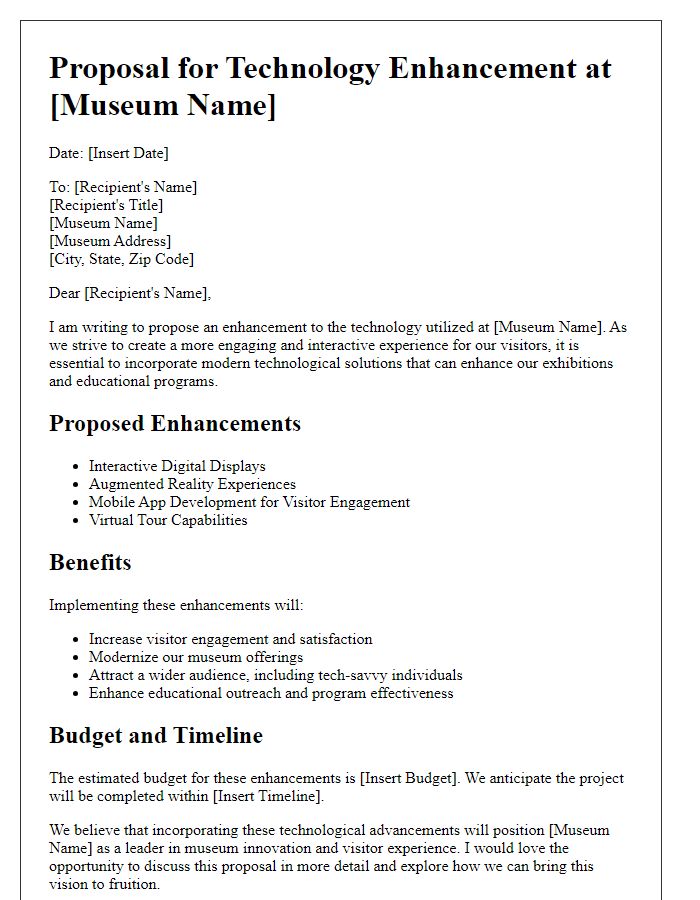
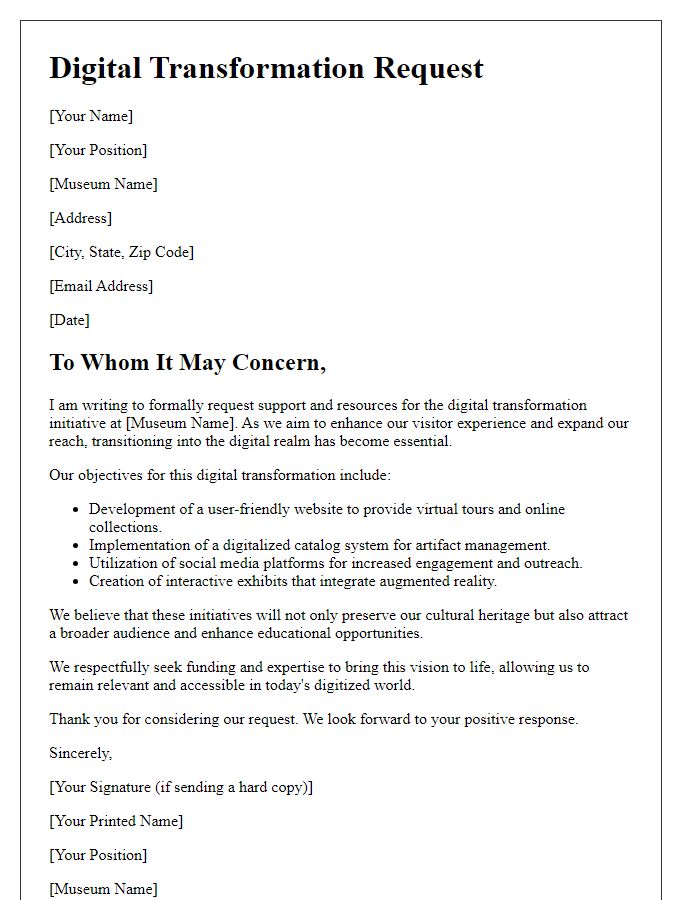
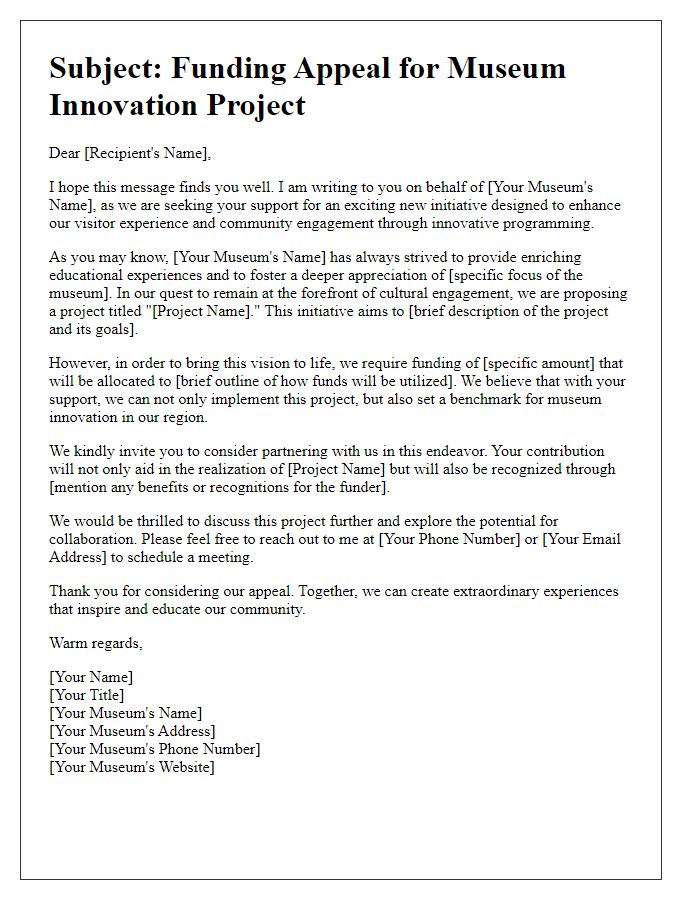
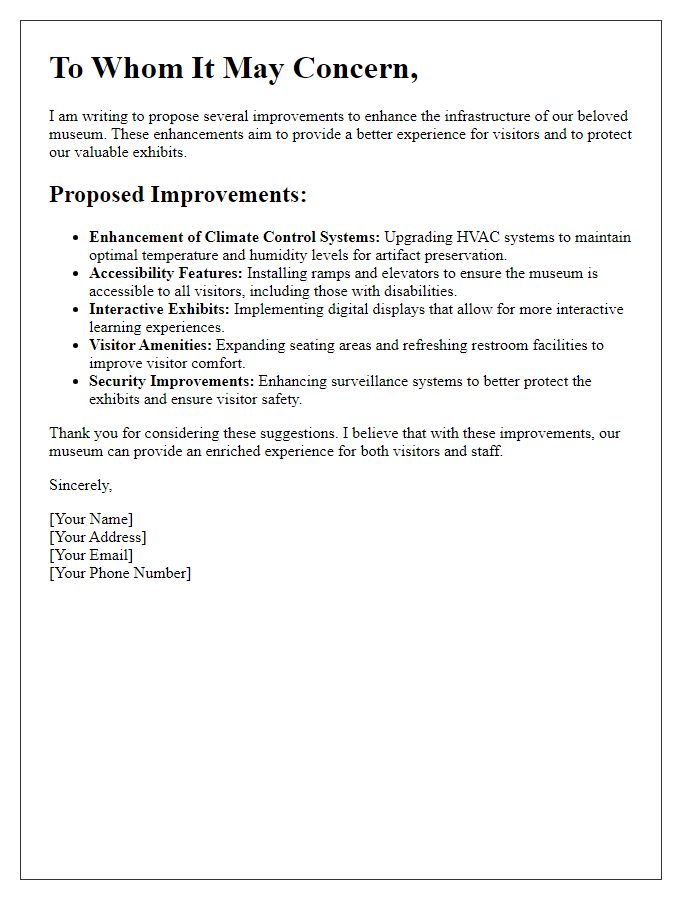
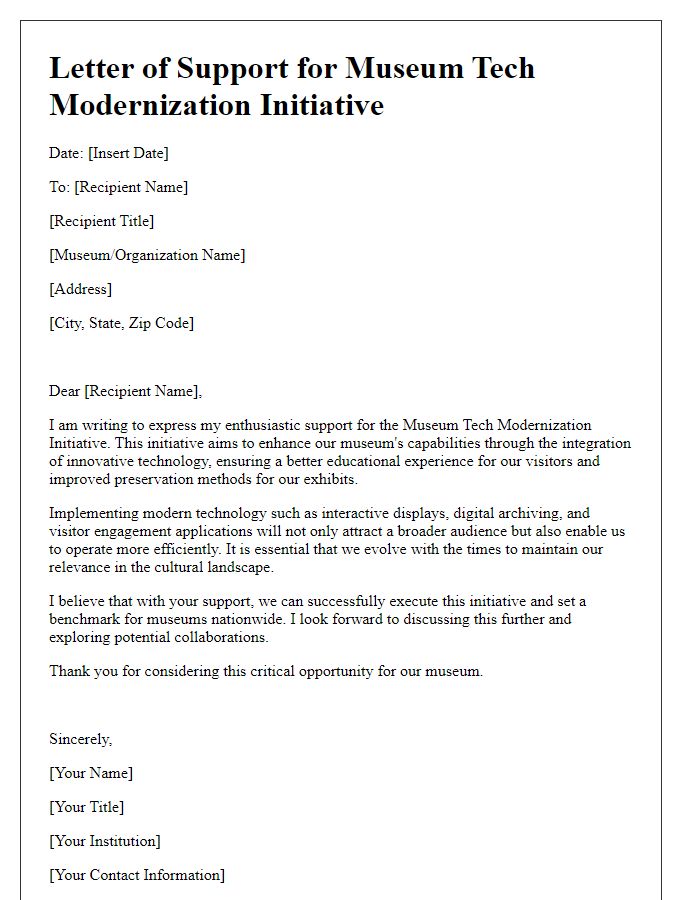
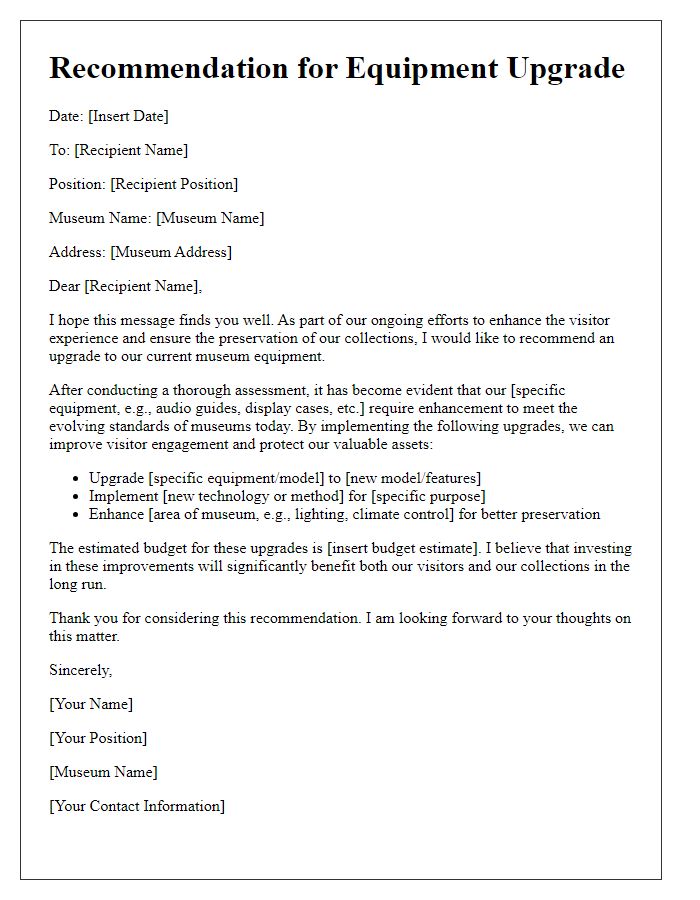

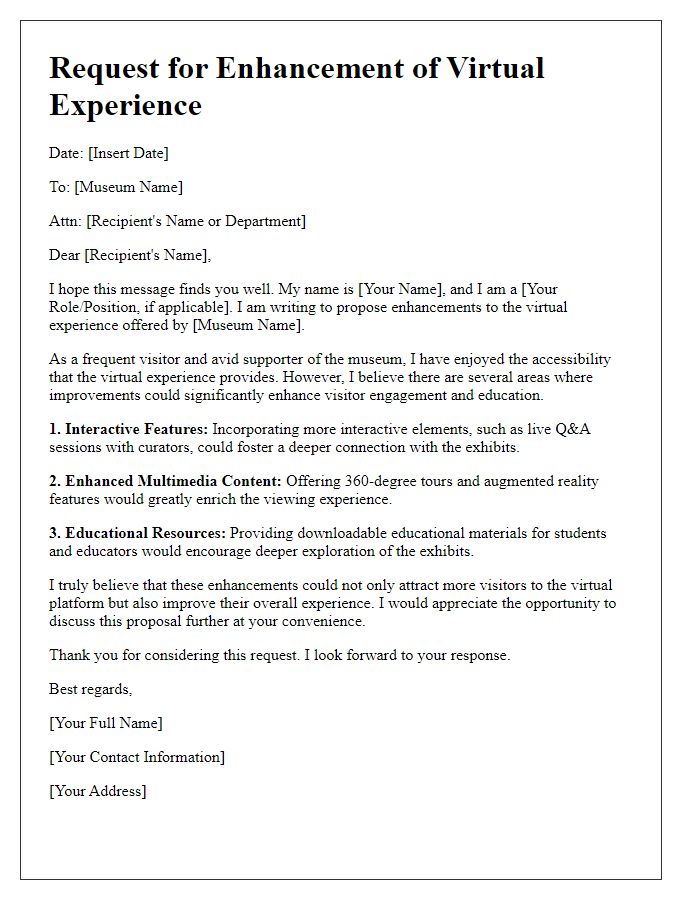
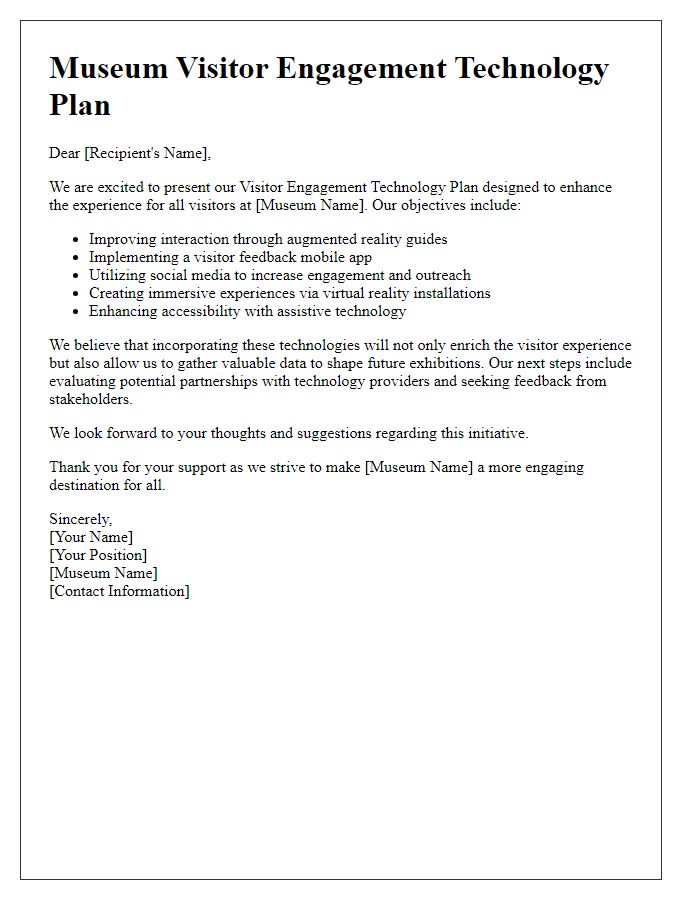
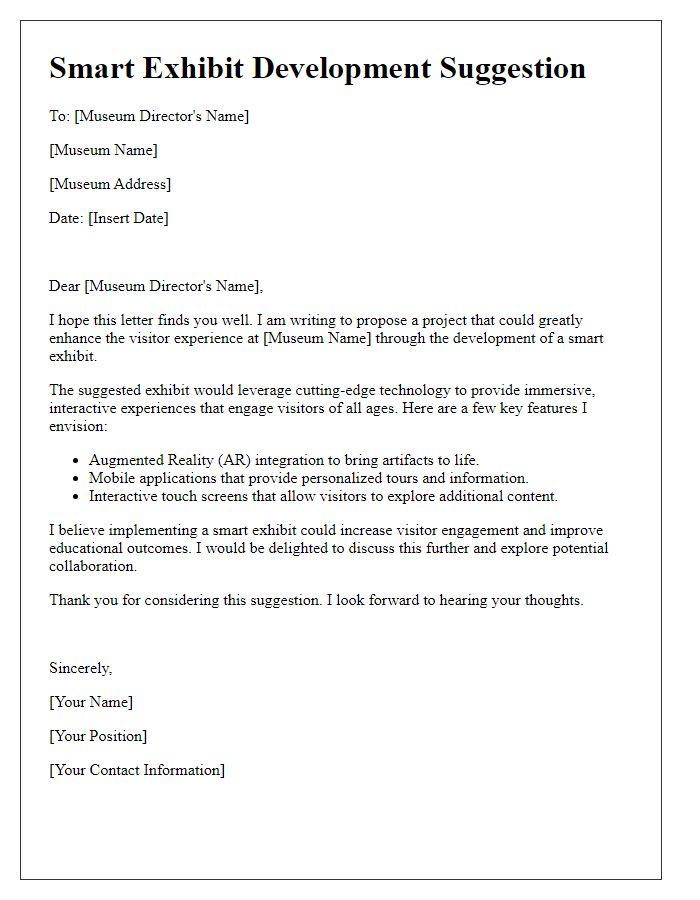


Comments